The turbolaser was the immensely scaled-up version of the blaster and laser cannon. These weapons were generally mounted on rotating turrets, which were commonly installed in banks on capital ships, space stations and orbital facilities. Some immobile variants, like those housed within defense towers of the city of Iziz, were used on the ground. Agrocite, an extremely rare ore that was found only on Khorm and Simocadia, was known to greatly enhance a turbolaser's destructive power. Mirkanite was also used in the production of heavy turbolasers.
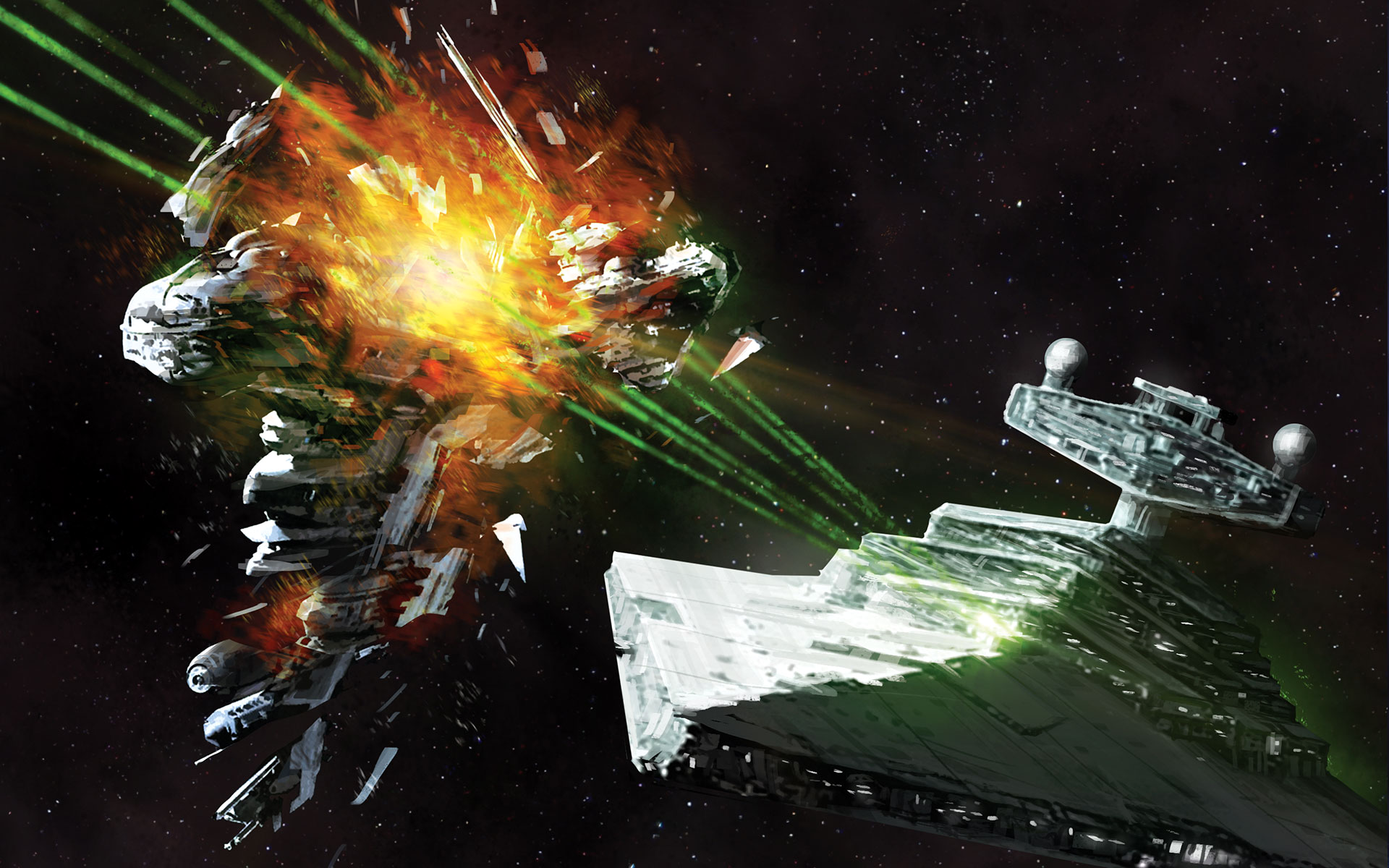
The devastating effects of heavy turbolasers
The turbolaser was a heavy laser cannon equipped with large banks of capacitors, allowing it to build up and store far more powerful energy bursts than a standard cannon. They also helped power the galven coils in the barrels of turbolasers. First, a particle beam was generated in the manner standard for blasters and laser cannons. Then power was increased by guiding this laser cannon particle beam through another stream of energized Tibanna Gas (besides the one used in generating the initial beam). The extra capacitors in a turbolaser that stored huge amounts of raw energy then contributed to the beam by energizing it further as it moved to the turbolaser's barrel. The resulting beam carried two or more times the energy of a standard laser cannon beam.
It then passed through a set of galven coils located in the turbolaser's barrel, further increasing the beam's power, and allowing it to pierce the defenses of heavily protected targets. Because these weapons required extra time to build up energy for their powerful blasts, they tended to have a slightly slower rate of fire than their weaker brethren (usually around one to two seconds between volleys, depending on the type of turbolaser and its power setting). The risk of overheating was high due to this massive energy buildup, and many turbolaser models were protected with complex cryosystems and a powerful cooling sleeve on the barrel.
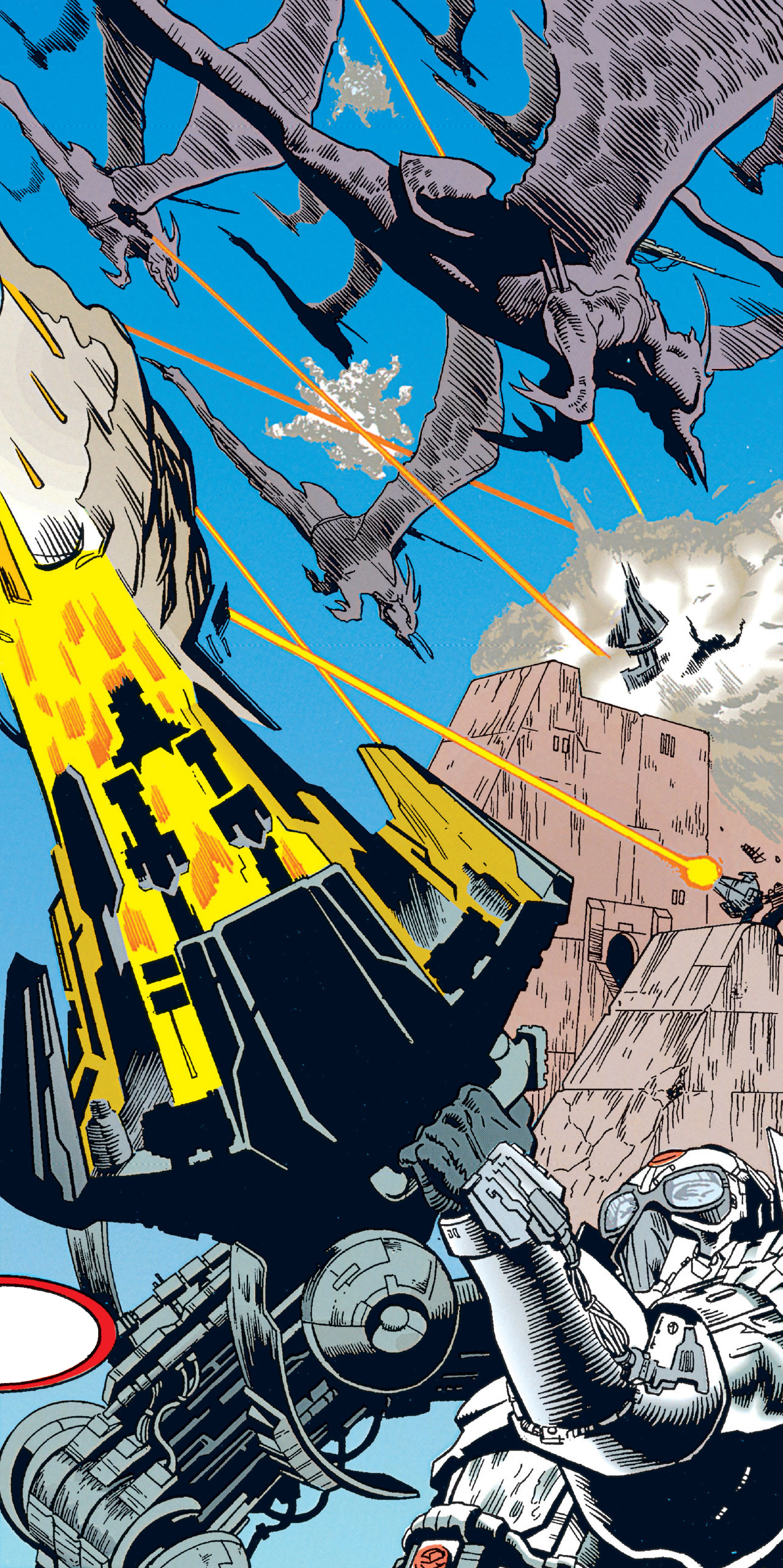
Manual, groundside turbolasers used in 4,000 BBY, during the Battle of Iziz
Turbolasers were the primary weapons of capital ships. They were used for ship-to-ship combat or, in some cases, planetary bombardment. A single blast from a turbolaser could completely incinerate a fully shielded starfighter; however, due to their slow turret traverse and an equally slow period of charging and cooling, turbolasers proved highly ineffective against fighters because fighters were too fast and small for a good target lock due to a slower rate of fire than point-defense cannons. Turbolaser turrets installed on the first Death Star were unable to hit the nimble Rebel starfighters that were attacking the station during the Battle of Yavin, although they could hit starfighters that were following predictable trajectories, such as straight lines. Thousands of years earlier, turbolaser batteries were used against the Beast Riders of Onderon by Queen Amanoa's contingent of Onderonian Wave gunners. These batteries were mounted inside the defense towers that lined the walls of Iziz, Onderon's single great city. Along with ion cannons, the turbolaser batteries were designed to combat the flying beasts used as war mounts by the Beast Riders.
A twin turbolaser cannon on a Munificent-class star frigate was powerful enough to melt an ice moon 1,000 kilometers in diameter, or pierce the shields of a 10-kilometer-wide Grade III battle station, and four star frigates could easily outgun a Venator-class Star Destroyer.
Commonly, turbolasers were arrayed along the length of capital warship hulls and linked to advanced fire-control systems to coordinate the cannon batteries for sustained, organized volleys of fire. The Grand Army of the Republic deployed turbolaser cannons mounted atop a heavy all-terrain drive unit during the Clone Wars. These SPHA-T walkers proved instrumental in taking down numerous Lucrehulk-class core ships during the First Battle of Geonosis, and these turbolasers were later installed inside the hangar bays of Venator-class Star Destroyers for effective ship-to-ship broadsides.
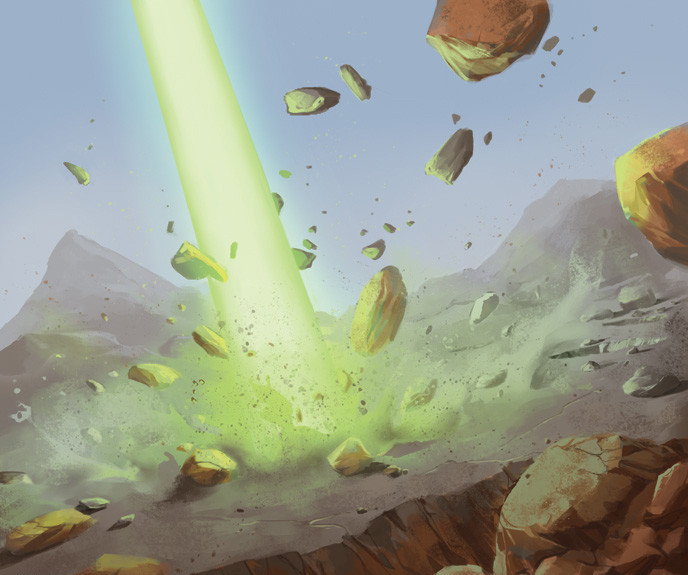
A turbolaser blast impacts a planet's surface
The Confederacy of Independent Systems created an upgraded turbolaser known as the "Agrocite cannon," which used rare Agrocite to greatly enhance the cannon's power. The cannon was so powerful it could destroy a Venator-class Star Destroyer in a single shot. Three such cannons were used during the Battle of Khorm.
Once strictly controlled by Imperial law, turbolaser technology advanced following the Galactic Civil War when New Republic–contracted military designers created the quick-recharge turbolaser. This variant proved effective during the Yuuzhan Vong War.
Following the war, a variety of long-range turbolasers were produced, with an even longer range than the standard type, though at the expense of greater power drain; even when mounted on an Imperial II-class Star Destroyer, the drain was noticeable. This limited their deployment to a number of Hapan Battle Dragons and the Star Destroyer Anakin Solo. Darth Caedus fired the turbolasers on the latter during the Battle of Kashyyyk, causing forest fires on the planet's surface.
Below are different general classifications of various turbolaser models:
- Heavy turbolaser
- Turbolaser battery
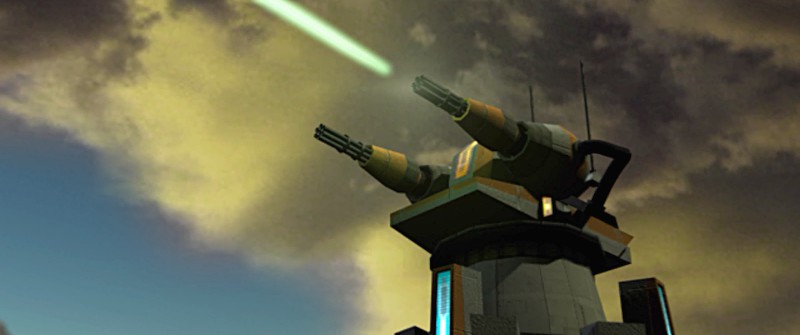
An air defense tower on Telos IV shortly after the Jedi Civil War
- Turbolaser
- Quad turbolaser cannon
- Light turbolaser
- Dual turbolaser cannon
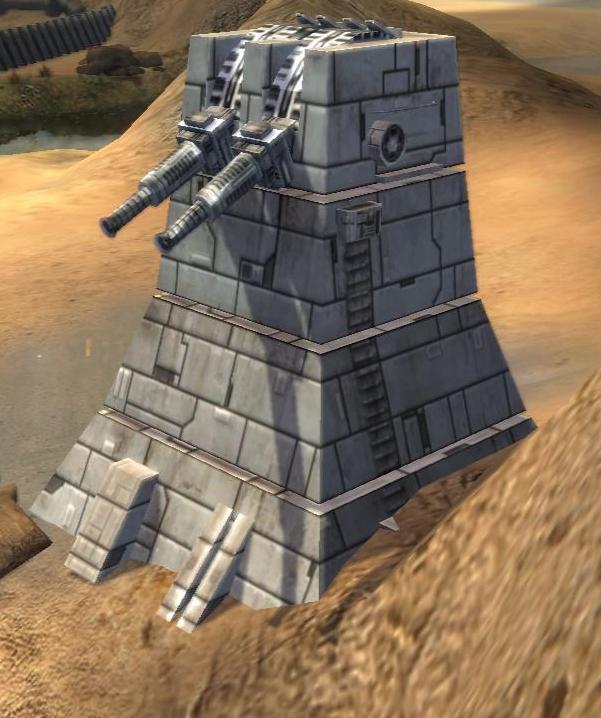
An XX-10 turbolaser tower
- DBY-827 heavy turbolaser turret
- H6 turbolaser
- H9 turbolaser
- KDD2055 short-range turbolaser
- MAS-2xB
- QuasarFire Turbolaser Turret
- Self Propelled Heavy Artillery - Turbolaser
- W-165 planetary turbolaser
- XI7 turbolaser
- XV7 turbolaser
- XV9 turbolaser
- XX-8 turbolaser
- XX-9 heavy turbolaser
- XX-10 turbolaser tower
- Long-range turbolaser
- Turbolaser System I
- Turbolaser blister
- Quad turbolaser cannon
- LEGO Star Wars: The Video Game
- LEGO Star Wars II: The Original Trilogy
- LEGO Star Wars: The Complete Saga
- LEGO Star Wars: Darth Maul's Mission
- LEGO Star Wars: Microfighters video game
- Star Wars: Tiny Death Star
- Death Star Designer